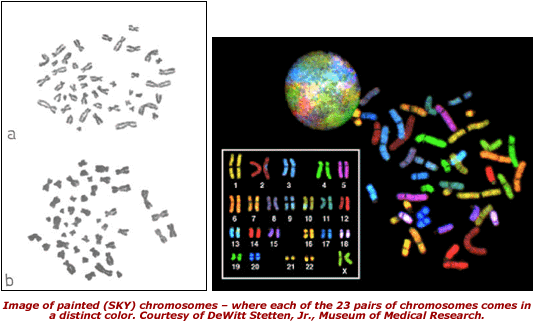Last updated: April 23, 2013
1955: 46 Human Chromosomes
1955: 46 Human Chromosomes

Joe Hin Tjio defined 46 as the exact number of human chromosomes.
Tjio, an NIH researcher, was interested in the chromosomes of cancer cells and how chromosomal abnormalities might correlate with malignant growth. But in 1955 there was yet no reliable data on the normal karyotype - or chromosome constitution - of human beings. The accepted number of total chromosomes, given for some 30 years, was 48. In late 1955, Tjio began to look at the chromosomes in human embryonic lung fibroblasts, grown in tissue culture. Early one morning, after many tries that already made him suspect that 46 is the real number of human chromosomes, he prepared metaphase spreads that showed the chromosome arrays particularly neatly. He found that all unbroken cells had 46 chromosomes.
Since then, technical advances in the field of cytogenetics - the study of chromosomes visually - have made the identification of chromosomes and of abnormalities like deletions and translocations more clear-cut.
More Information
Reference:
Tjio and Levan: "The chromosome number in man". Hereditas, 42: 1, 1956.

« Previous Event | Next Event »
